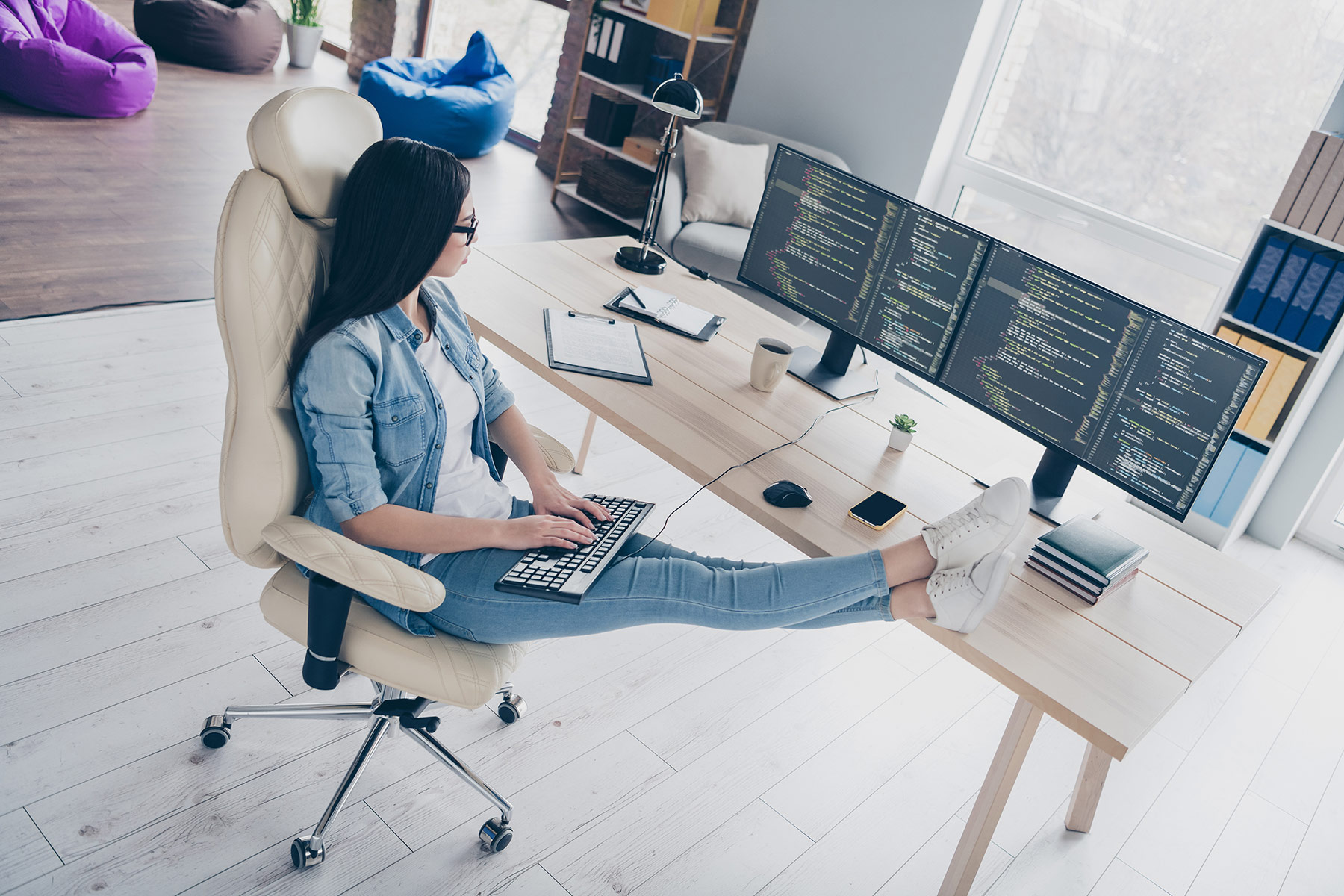Remember the days when office spaces felt more like sterile environments, with white walls and maybe some lame wall art, if you were lucky? Over the years, office spaces have transformed from drab to fab as companies compete for talent in today’s competitive landscape. We’ve found that clients continue to trend toward hybrid office spaces, which means ditching the traditional reception area, conference rooms and large meeting spaces in favor of flex spaces.
In this article, we will talk about what hybrid office flex design means, why companies are still favoring this model, and what it means for a combo in-person and work-from-home (WFH) workforce.
Flex Spaces Offer More Room for Real
In 2020, as the corporate workforce settled into their home offices, studies have now shown that they seldom stayed in one place to get their work done. People had the luxury of laptops that allowed them to move from inside to outside, from the kitchen table with views of a television to a corner nook for focus time.
In the real world, few people would happily choose to sit in one space for eight hours per day. Human beings like to move around based on what they are doing and where their moods take them. Today as companies seek to attract employees back to the office, they are seeking designs with this in mind.
Over the past two years, our clients have re-evaluated their office spaces and how they were being allocated. They have removed spaces from their program, such as formal reception, and reduced the quantity of private offices and workstation sizes to allow people to choose what works best for them. Diverse workstations provide for individuality rather than a one-size-fits-all model. This has allowed for flex spaces such as:
- Entries that reflect a hotel lobby hospitality feel that double as meeting spaces and casual work areas for staff to work.
- Private offices that double as team huddle rooms for a small-group meetings.
- Reduced workstation sizes to allow for larger gaps between stations (making staff feel less condensed) and extra space for adding in small quiet rooms for private conversations and focus work.
- Enlarged traditional breakrooms to provide a café feel with different types of seating to connect with colleagues and take breaks.
Companies are also providing IT Help Desks on site for the days employees are in the office. Think of the Genius Bar right in your own office, where staff can walk up at their scheduled appointment time and get real-time help with technology. We’ve also seen clients change from the traditional receptionist to a concierge who manages all of these shared spaces and helps with assigning workspaces to staff daily. A concierge can also assist with IT Help Desk appointments, and stock hospitality bars and supplies such as snacks and drinks, free to staff and visitors.
Great Office Design Impacts Employees
Happiness and comfort at work are critical to everyone’s success. This is why so many companies are going with office space designs that ensure their employees feel valued. Imagine arriving at work after the hectic morning rush to beautiful design, great coffee and snacks, music playing in the background, and plenty of work spaces to choose from. A sigh of relief and calm sweeps over you… that’s when you know the space has been planned to perfection. Its important people have their own personal work spaces, but it is equally important to offer varied spaces to support needs as the day presses on.
Hybrid Spaces are Key for In-Person and WFH Combo Workforces
Some companies are reducing their carbon footprint by offering flexible WFH schedules. This strategy also allows people to choose – based on their needs – and has become critical in competing for talent. Due to employees not being in the office as much in WFH-option environments, companies don’t need the large spaces nor as many private offices, which affords them the space to create these flex environments. Adding music and TVs throughout the space helps make it feel less “empty” to those on-site.
There are many factors that play into what’s right for your business. It’s our job to get to know your company culture, your goals and your people. The best design evokes a positive feeling for those who will experience it. Follow KARDENT on Instagram and LinkedIn for more content like this.

